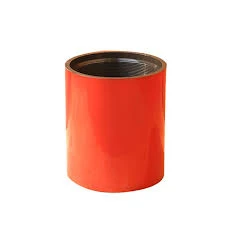- Afrikaans
- Albanian
- Amharic
- Arabic
- Armenian
- Azerbaijani
- Basque
- Belarusian
- Bengali
- Bosnian
- Bulgarian
- Catalan
- Cebuano
- Corsican
- Croatian
- Czech
- Danish
- Dutch
- English
- Esperanto
- Estonian
- Finnish
- French
- Frisian
- Galician
- Georgian
- German
- Greek
- Gujarati
- Haitian Creole
- hausa
- hawaiian
- Hebrew
- Hindi
- Miao
- Hungarian
- Icelandic
- igbo
- Indonesian
- irish
- Italian
- Japanese
- Javanese
- Kannada
- kazakh
- Khmer
- Rwandese
- Korean
- Kurdish
- Kyrgyz
- Lao
- Latin
- Latvian
- Lithuanian
- Luxembourgish
- Macedonian
- Malgashi
- Malay
- Malayalam
- Maltese
- Maori
- Marathi
- Mongolian
- Myanmar
- Nepali
- Norwegian
- Norwegian
- Occitan
- Pashto
- Persian
- Polish
- Portuguese
- Punjabi
- Romanian
- Russian
- Samoan
- Scottish Gaelic
- Serbian
- Sesotho
- Shona
- Sindhi
- Sinhala
- Slovak
- Slovenian
- Somali
- Spanish
- Sundanese
- Swahili
- Swedish
- Tagalog
- Tajik
- Tamil
- Tatar
- Telugu
- Thai
- Turkish
- Turkmen
- Ukrainian
- Urdu
- Uighur
- Uzbek
- Vietnamese
- Welsh
- Bantu
- Yiddish
- Yoruba
- Zulu
API Tubing Couplings Specifications and Applications in Oil and Gas Industry
Understanding API Tubing Couplings An Essential Component in Oil and Gas Operations
In the oil and gas industry, the proper functioning of well systems relies heavily on various types of specialized equipment. Among these components, API tubing couplings play a crucial role in establishing the integrity and efficiency of drilling operations. As integral parts of the well construction process, tubing couplings are designed to connect sections of tubing that transport oil or gas from the well reservoir to the surface. This article explores the significance, types, standards, and applications of API tubing couplings in the industry.
What are API Tubing Couplings?
API tubing couplings are short, threaded sections of pipe used to join two lengths of tubing together. They are manufactured according to the specifications set by the American Petroleum Institute (API), ensuring consistency, safety, and reliability in the oil and gas industry. API standards provide guidelines for various aspects of the couplings, including their material properties, dimensional tolerances, and performance criteria.
The primary purpose of these couplings is to facilitate the seamless connection of tubing strings, which are essential for conveying hydrocarbons extracted from underground reservoirs. The design of API tubing couplings ensures that they can withstand the high pressures and temperatures typically encountered in oil and gas operations.
Types of API Tubing Couplings
There are several types of API tubing couplings, each designed for specific applications and conditions
. Some common types include1. Regular Couplings These are the most frequently used type for standard tubing applications. They provide a reliable connection between two tubing joints and are designed to withstand moderate pressures.
2. Heavy Wall Couplings Designed for use in high-pressure environments, heavy wall couplings offer enhanced strength and durability. They are often used in deep wells where pressure and temperature conditions can be extreme.
3. Long Barrel Couplings These couplings feature a longer length than regular couplings, providing additional tensile strength and resistance to bending. They are particularly useful for applications where the risk of joint failure is high.
4. Special Couplings Customized couplings may be designed for unique situations or specific customer requirements. These can include factors such as non-standard thread types or specific material compositions.
api tubing couplings

Standards and Specifications
API couplings are produced under strict adherence to industry standards, particularly API Spec 5B, which outlines the requirements for the design, manufacturing, and testing of couplings and other accessories used in tubular products. These standards ensure that couplings meet the necessary performance criteria for safety and reliability.
In addition to API specifications, manufacturers may also adhere to ISO and other international standards, further ensuring the quality and compatibility of couplings for use in global operations. The consistent compliance with these standards fosters trust among operators, knowing that the couplings they use are reliable and safe under varied field conditions.
Applications of API Tubing Couplings
API tubing couplings are employed in a wide range of applications across oil and gas extraction. These include
- Onshore and Offshore Drilling In both types of drilling environments, the integrity and reliability of tubing connections are paramount to avoid leaks and potential blowouts. API couplings ensure that connections can withstand the challenges posed by deep well drilling.
- Production Systems Once wells are established, tubing strings, connected by API couplings, facilitate the extraction and transport of crude oil and natural gas to processing facilities. The efficiency of these connections directly impacts the productivity of extraction operations.
- Well Maintenance During the servicing of oil and gas wells, API tubing couplings play a critical role in replacing or repairing segments of tubing as needed, ensuring that the system remains operational and secure.
Conclusion
API tubing couplings are indispensable components in the oil and gas industry, serving as the backbone of well integrity and efficiency. By ensuring that connections are reliable and capable of withstanding the rigors of extraction processes, these couplings contribute significantly to the overall success of drilling operations. Complying with API standards further underscores their importance, as they ensure safety, quality, and performance in diverse operating conditions. As the industry continues to evolve, the design and application of tubing couplings will undoubtedly adapt to meet new challenges and enhance operational efficiency.
-
Tubing Pup Joints: Essential Components for Oil and Gas OperationsNewsJul.10,2025
-
Pup Joints: Essential Components for Reliable Drilling OperationsNewsJul.10,2025
-
Pipe Couplings: Connecting Your World EfficientlyNewsJul.10,2025
-
Mastering Oilfield Operations with Quality Tubing and CasingNewsJul.10,2025
-
High-Quality Casing Couplings for Every NeedNewsJul.10,2025
-
Boost Your Drilling Efficiency with Premium Crossover Tools & Seating NipplesNewsJul.10,2025







